The fight to save India’s most elusive cat

INDIA – The fishing cat is one of India’s most enigmatic predators, hunting the waterways of its remaining wetlands and swamps. The efforts to save it may also help save a vital buffer against climate change. The encounter took place on a cool winter morning in 2012, in the coastal Indian city of Visakhapatnam. A gentle breeze nipped at the air as Murthy Kantimahanti stood transfixed, staring at a metal trap set up on a dirt trail leading to dense bushes and towering neem trees. Inside the trap was a cat – but no ordinary cat. It was bigger than a house cat, but not as big as a leopard or a tiger. It had a squarish face, relatively small ears for the size of its head, a short tail and curiously webbed feet, like an aquatic animal. Kantimahanti had just arrived at the Indira Gandhi Zoological Park in the heart of the Seethakonda Reserve Forest, where he worked as a biologist. He was used to seeing native wildlife like Sambar deer, the Asiatic wild dog, the Indian leopard and gaur (also known as Indian bison) ranging within the park’s natural enclosures, bordered with hedges and trenches. But this cat was something else entirely. READ MORE GLOBAL Why the Market for ‘Blue Carbon’ Credits May Be Poised to Take Off
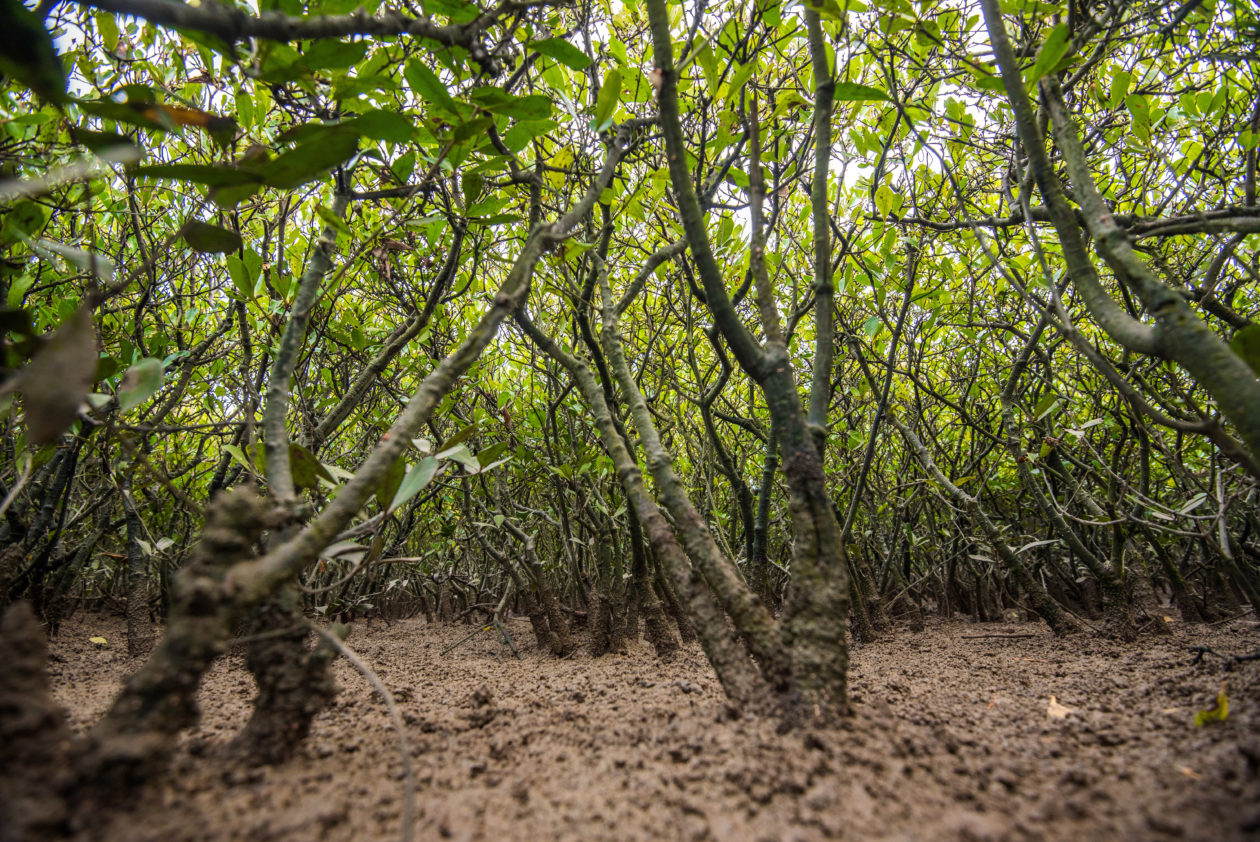
GLOBAL – Seagrasses, mangrove forests, and coastal wetlands store vast amounts of carbon, and their preservation and restoration hold great potential to bank CO2 and keep it out of the atmosphere. But can the blue carbon market avoid the pitfalls that have plagued land-based programs? Off the shores of Virginia, vast meadows of seagrass sway in the shallow waters. Over the past two decades, conservation scientists have spread more than 70 million seeds in the bays there, restoring 3,600 hectares (9,000 acres) of an ecosystem devastated by disease in the 1930s. The work has brought back eelgrass (Zostera marina) — a keystone species that supports crustaceans, fish, and scallops, and is now absorbing the equivalent of nearly half a metric ton of CO2 per hectare per year. Now, the Virginia Nature Conservancy is aiming to turn those tons into carbon credits that it can sell for cash. READ MORE AFRICA Gabon’s mangroves stand among the world’s tallest but face threats

GABON – On the northern coast of Gabon, the rumble of chainsaws has now joined the usual buzz of insects in the mangrove forests fronting the Atlantic. The chainsaws are just one sign of increased human encroachment into undeveloped areas near the country’s capital, Libreville, leading to calls for conservation action as the importance of Gabon’s mangroves has come into sharper focus. “Gabon’s mangrove trees are really critical forest biomass because the mangroves store so much carbon,” says Liza Goldberg, a NASA Goddard Flight Center researcher. In the past decade, scientists at the NASA Goddard Flight Center determined that mangroves in Gabon and other Central African nations are among the world’s tallest, with freshwater key to their growth. In Gabon, an abundance of freshwater has enabled mangroves to grow up to 63 meters in height and provide an important brake on climate change. READ MORE Human activities threaten survival of coral, mangrove ecosystem at the Coast

KENYA – The destruction of mangrove forests that is currently happening along Kenyans Coastal regions is alarming and negates all that the country is doing to mitigate the adverse effects of climate change as a result of environmental pollution. Because of human activities including over exploitation for timber and fuel wood, pollution, development, human settlement and conversion to aquaculture, the mangroves that had donned the ocean shores, and sustaining the life balance are disappearing at a disheartening rate. While a few case studies exist where local communities through links with international allies are trying to save the mangroves through a scheme that involves selling of carbon credits, the destruction is unbelievable. READ MORE Cameroon’s Mangrove Forests Are Choking on Plastics 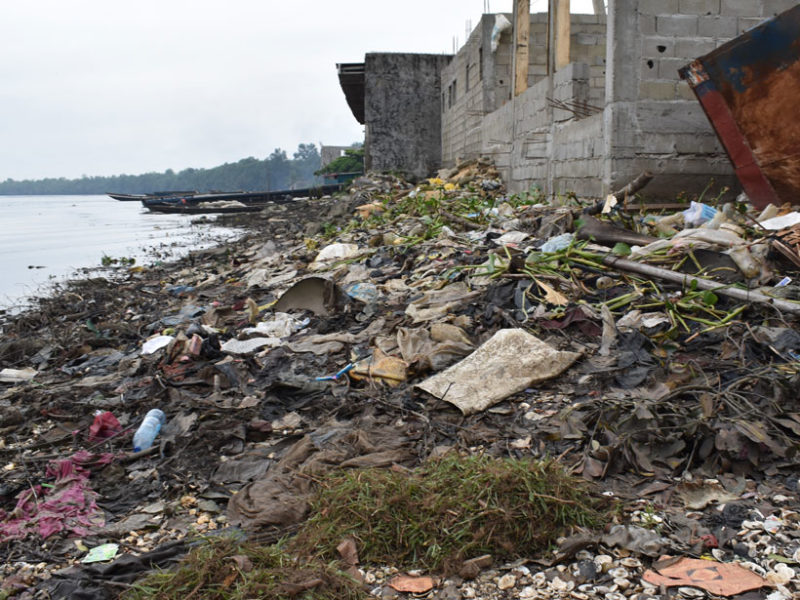
CAMEROON – Large amounts of plastic—bottles, cups, bags, plates, and other debris of various shapes and colors—washed up on the nearby boat ramp as we sat down to breakfast at a waterfront restaurant on our first morning in Youpwe, a neighborhood on the Wouri Estuary in Douala, Cameroon. Later that day, we ventured out to explore the nearby shore of the tidal Doctor Creek. We found still more plastic litter—floating on the water, trapped in sediments exposed by the ebbing tide, and caught in the foliage and roots of the otherwise-lush mangrove forest through which the creek flows. We were in Cameroon on this visit in summer 2019 for a 5-week National Science Foundation–funded International Research Experience for Students to investigate anthropogenic impacts on the estuary. Although the pervasive litter shouldn’t have surprised us, it was shocking nonetheless and offered a stark reminder of the global tragedy of plastic pollution. READ MORE ASIA World Earth Day 2021: Indian artists come together in support of Mumbai’s mangroves

INDIA – Mumbai’s mangroves cover an area of 66 square km that poses as a natural barrier against sea level rise and coastal flooding, while welcoming a wealth of migratory birds and aquatic species. Mumbai’s mangroves are among 12 unique mangrove forests in India selected for better conservation by the Mangrove Society of India. Maharashtra is the only state with a devoted Mangrove cell. Biodiversity by the Bay presents a series of artworks in support of Mumbai’s wetlands and its rich biodiversity. This artistic intervention raises awareness of Mumbai’s unique ecosystems especially its wetlands and mangroves. Led by six artists including Nayan Shrimali and Vaishali Chudasama, Svabhu Kohli, Anjali Mehta, Mira Malhotra, Afrah Shafiq, and Michelle Poonawalla, the initiative invites people to create new artworks under its social media campaign #MakeArtforMumbaisMangroves launched on the occasion of World Earth Day 2021, a day dedicated to demonstrate support to environmental protection. READ MORE Java’s mangroves pay a high price for stopping plastic flowing out to sea

INDONESIA – Celine van Bijsterveldt and her team had traveled to Central Java’s mangrove forests to investigate efforts to restore them. But when the researchers saw plastic trash strewn throughout the swamps, ensnaring roots and shrouding branches, they were instead compelled to examine its toll on the trees. “It’s a crazy amount of plastic,” said van Bijsterveldt, a doctoral candidate at Utrecht University and NIOZ Royal Netherlands Institute for Sea Research, and the lead author of the resulting paper in Science of The Total Environment. “You just couldn’t ignore it.” Although mangroves adapt to plastic debris, too much can kill them. Scientists worry that its continued accumulation could endanger these forests and the ecological and human communities depending on them. This concern is especially pressing in Indonesia, home to almost one-quarter of the world’s mangrove ecosystems and to highly acute plastic litter and mangrove destruction. READ MORE Dubai gets a stunning new mangrove forest
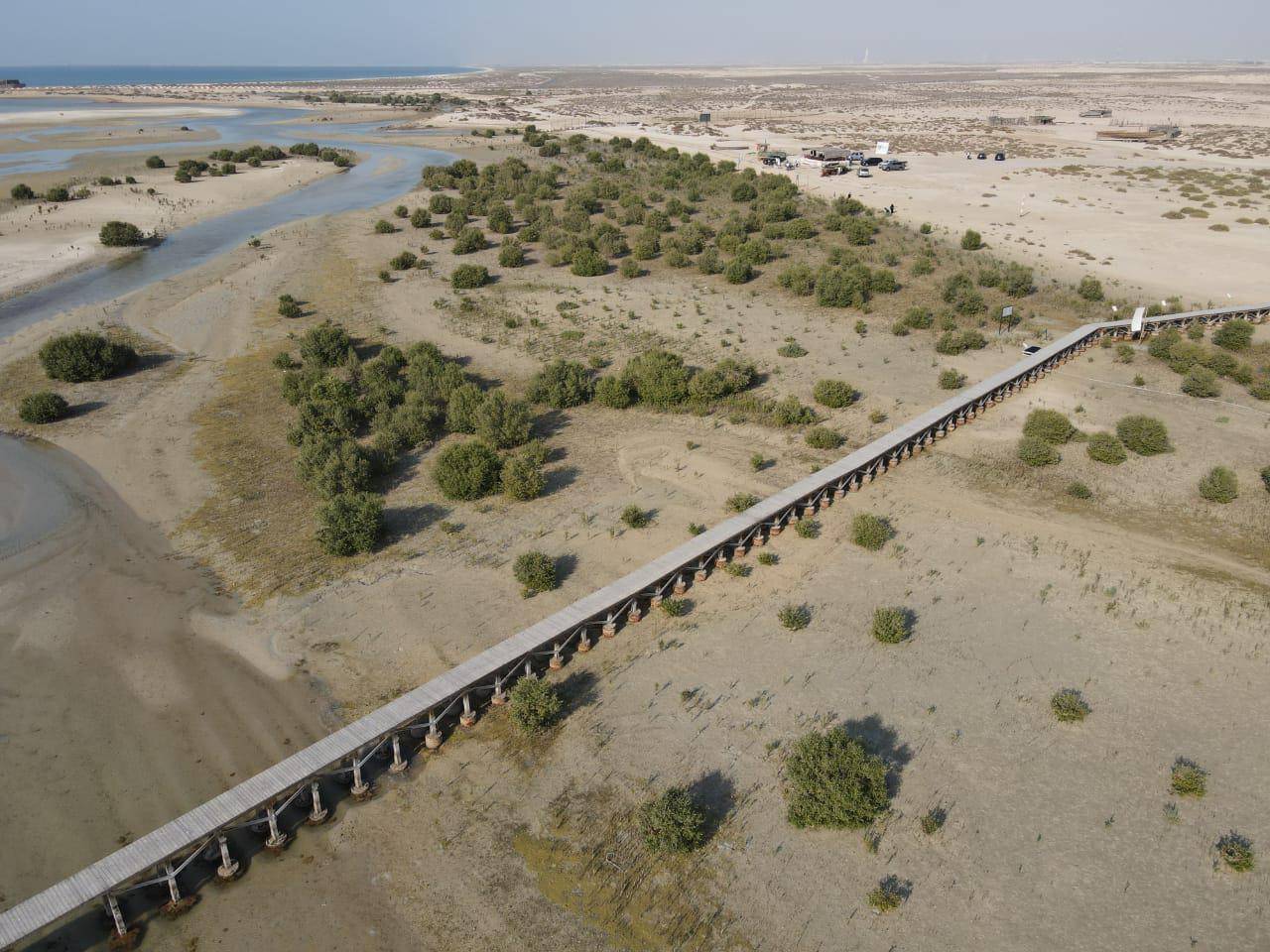
DUBAI – Dubai has now officially got a mangrove forest in the heart of the city in line with plans to have 60 per cent of Dubai’s land under forest cover over the next decades. The Mangroves Forest located at the Jebel Ali Wildlife Sanctuary will comprise coral reefs, mangroves, sea grass beds and a natural beach. Environmental experts will be using this specially designated land (protected area) next to the sea to develop it into a full-fledged forest. They intend to plant new mangroves and also adopt mangroves that are older (4 or 5 years old) to maximize the future carbon sequestration and offsetting potential. Mangroves also self-filtrate, removing irrigation from the equation making them ideal for water conservation. Typically, a mangrove is a shrub or small tree that grows in coastal saline or brackish water. Major Ali Al Suweidi, President of EMEG, said, “The mangrove is a local species and we call it Sena Marina which is a special species in the Gulf. This species grows because of heat and we have salt water and therefore this species grows very well here. We started to plant this a long time back. We have mangroves in Abu Dhabi, Sharjah and Dubai. The reason we are planting this mangrove is because it soaks up five times more carbon dioxide than any plant. This is a good solution against global warming and other problems. READ MORE AMERICAS Miami resident picks up nearly 14,000 pounds of trash from Florida mangroves in 100 days

USA – What started as a trash cleanup day in Bear Cut Reserve over three years ago has turned into a massive passion project for a Miami native — and he plans to continue cleaning Miami’s mangroves single-handedly until his body literally cannot anymore. His name is Andrew Otazo, and so far, he has picked up exactly 13,640 pounds of trash from the mangroves and shores of Virginia Key, Key Biscayne, and Biscayne Bay. He knows this because he lugs around a heavy luggage weight when he’s cleaning the mangroves in the Miami heat. Thirty-three-year-old Otazo, like so many Miami natives, says he grew up by the water and has always loved seeing the mangroves. As he got older, he would go out to these reserves to seek solitude. However, his peace would be interrupted when he would stumble upon alarmingly massive amounts of trash, litter, and debris. “I’ve been exploring these habitats since I was 13 years old and I absolutely love them,” he says. “Before I made major headway through Bear Cut Reserve, it was covered in literal trash. So, I’d go out to these areas to try to seek solace and peace, and every time I’d come out I’d be so upset — I’d be angry.” READ MORE Celebrate Earth Day With A Spotlight On ‘MangroLife’

What started as a fun way of hanging out outside became a mission. “We paddleboard a lot on the canals. When we’re out there, we noticed two things, trash and floating mangrove propagules. So this whole project is a combination of both of these discoveries. We do a lot of trash cleanups and collect the propagules and we grow them,” said Jonah Basi. Basi added they have collected almost 800 pounds of trash since October of 2020. One good thing that came from the pandemic are kids like Jonah, a St. Thomas Aquinas High School junior, coming up with a way to get much-needed service hours, while also doing something outdoors and purposeful. The cleanup led organically to a gathering of the seedlings and then planting them at the park. “The propagules will grow in anything. They grow in pots and tanks and stuff like that. Since we had 20 growing, we came out here to plant them. A wonderful community member brought a really huge one too,” said Jonah. READ MORE EUROPE What are mangroves and why are they the key to saving the planet?
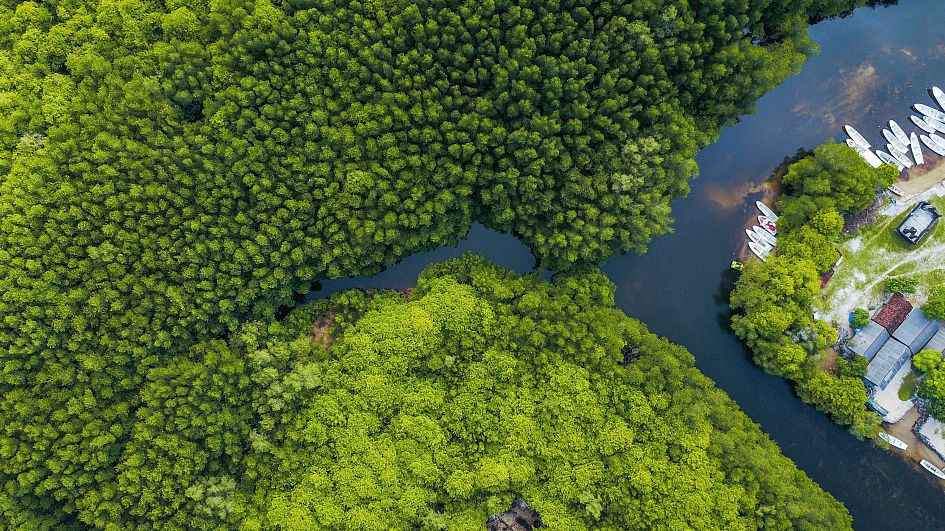
U.K. – They may only cover 0.1 per cent of the planet’s surface, but mangroves could quite literally save the world. The coastal trees found in over a hundred countries are increasingly being discussed as a cornerstone of various environmental policies and protection initiatives. These plants are capable of withstanding conditions unlike any other trees – all while fighting climate change and supporting local economies. But mangroves are also under threat. More than half have been lost to oil spills and deforestation, and these saline forests are disappearing at a quickening pace. Right, it’s confession time. I’m an environmental journalist, and have been for a while now, but I’ve struggled to fully understand what mangroves actually are. It turns out, I’m not the only one who can’t quite articulate the concept. This is because the word ‘mangroves’ is used interchangeably to describe a few different things. READ MORE FEATURED VIDEOS Celebrate World Migratory Bird day May 8, 2021

Wild Recovery: Protecting nature and preventing the next pandemic 
Earthrise looks at protecting wildlife and preventing pandemics through the stories of two endangered mammals which have been investigated for links to COVID-19. VIEW VIDEO
Like this newsletter?
Pease consider donating to MAP to keep it going.
Giving could never be easier  | URGENT ACTION Stop construction work on a private port In Defense of the Quilombo Boca Do Rio TAKE ACTION! Tell Sumitomo to stop building polluting coal power in Bangladesh! TAKE ACTION! Stop Adaro, Indonesia’s coal giant, from refinance its debt.
TAKE ACTION Buy a Pin – Support MAP
 2021
CHILDREN’S ART CALENDAR BUY YOURS!
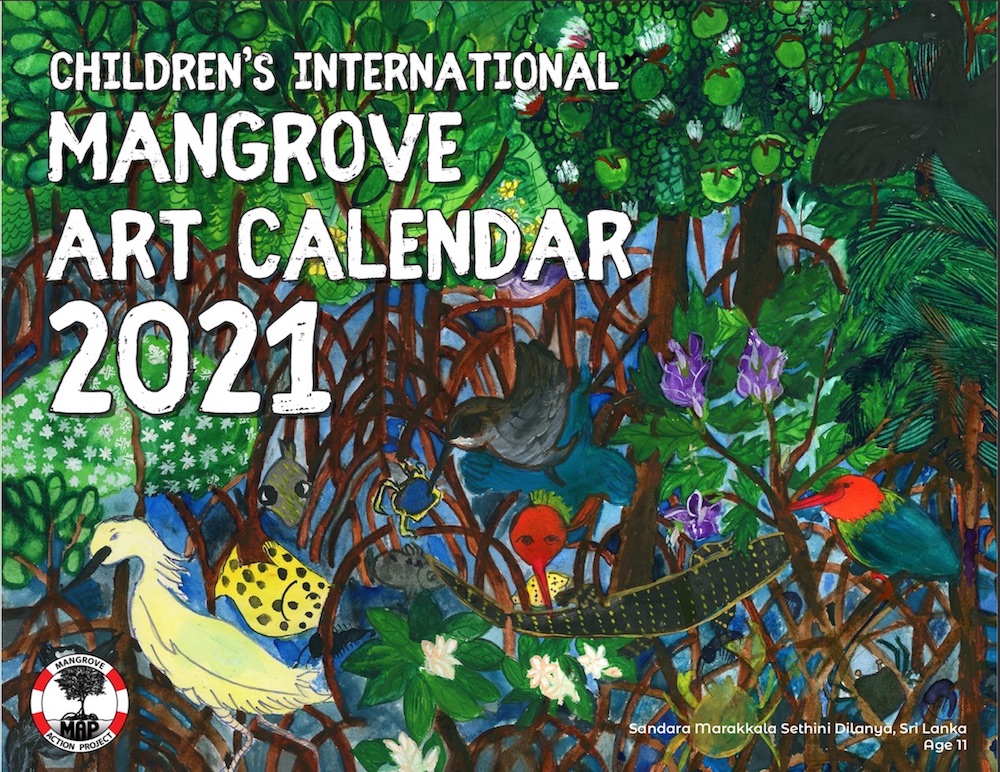
ACTION ALERTS Lawsuit Against Genetically Engineered Tree Solidarity Group – SIGN PETITION Tell the Japan International Cooperation Agency not to fund polluting coal – TAKE ACTION Please SIGN: keep plantations out of orangutan habitat!
TAKE ACTIONUnilever: stop destroying mangroves for convenience food! SIGN OUR PETITION
Stop plundering the oceans for industrial aquaculture! SIGN THE PETITION
Like this newsletter? Pease consider donating to MAP to keep it going. Giving could never be easier
Please see our newest video: “Restoring The Natural Mangrove Forest”
WATCH VIDEO 
Restoring The Natural Mangrove Forest
Watch movie 
Community Based Ecological Mangrove Restoration in Rufiji Delta VIEW VIDEO Video: Mangroves for the Future – A look bacK. As the latest phase of Mangroves for the Future (MFF) draws to a close, this video highlights some of the project’s most successful initiatives – from local women supporting national park management in Viet Nam to an island in the Maldives that has become a model for waste management, and everything in between. View Here WANT TO GET INVOLVED?
Follow and Join MAP!    
Like this newsletter? Pease consider donating to MAP to keep it going. Giving could never be easier 

Singing for the Sundarbans WATCH HERE Entrevista con Monica Quarto del Mangrove Action Project (Spanish language) Oye Aqui
VOLUNTEER OPPORTUNITY 
MANGROVE ISSUES Want to learn more about mangroves?
Our short presentation will give you a better understanding of the issues we are working to solve. WATCH PRESENTATION What is CBEMR? Download MAP’s 2 page CBEMR Information Sheet containing links to all MAP’s CBEMR resources – CLICK HERE
View MAP’s uploaded Videos at
MAP Video Gallery Question Your Shrimp Consumer/Markets Campaign!
WATCH VIDEO Mangroves: Guidebook to Malaysia – Click Here SHARE MAP’S VISION
CLICK HERE to watch short introductory video. Together we can work “at the roots of the sea”. Our short documentary, Reducing the Risk of Disaster through Nature-Based Solutions : Mangroves

Marvellous Mangroves Curriculum The Marvellous Mangroves Curriculum begins with a simple philosophy – getting future generations to not only learn about, but understand the importance of mangrove forests. VISIT 
The award-winning Marvellous Mangroves (MM) curriculum educates children on the importance of mangroves and their ecological functions, teaching them about modern challenges and mechanisms for sustainability. VIEW VIDEO Marvellous Mangroves Curriculum in Bangladesh – WATCH VIDEO
MARVELLOUS MANGROVES IN BRAZIL
En Portuges 
Marvellous Mangroves – A Curriculum-Based Teachers Guide.
Like this newsletter? Pease consider donating to MAP to keep it going. Giving could never be easier 
“Question Your Shrimp” Campaign Question Your Shrimp – is it really sustainable? Sign the Petition
Note to Our Readers: We strive to keep active links in our newsletter. However, due to circumstances beyond our control, occasionally links to stories may become broken. If you find a link to a story is not functioning, please cut and paste the headline into your browser search bar. In most cases you should be able to locate the original story.
Not yet a MAP News subscriber?
Click here to subscribe. 
|




























